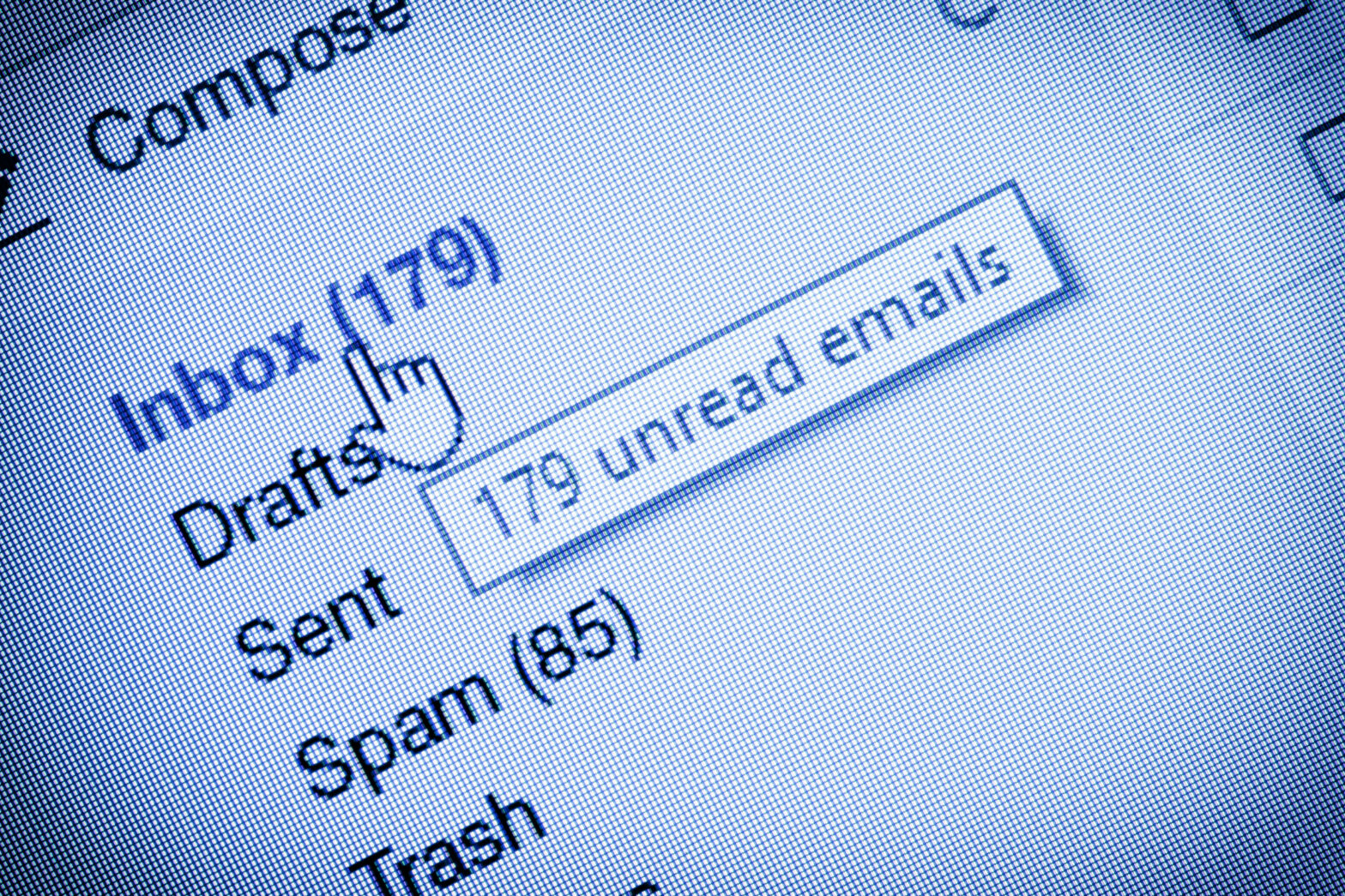Over the last year there has been a huge rise in businesses pledging to radically change their offices by encouraging employees to delete cc’d emails or even remove the office inbox and email entirely. Businesses trying to find ways to cut email down to size have one main focus – to give staff their time back and so boost productivity.
Last summer French IT company Atos led the way with a pledge to end email and is on track to achieve that over the next year. Now a housing trust in Cheshire has picked up the baton and is preparing to turn off its internal server after a two-year programme to ween staff off emails.
The Halton Housing Trust found staff were spending 40 per cent of their time on internal emails, describing the use of email in the office as ‘addictive’.
I spend a lot of time thinking about email. My company runs workshops helping people to improve email etiquette and get their inboxes to zero, and as a result, it’s important that I lead from the front. So as part of my quest to become a better human being (as well as a more productive one) I made the change to only processing my emails on Mondays and Thursdays, allowing me to get my head out of my inbox and spend more time focused on the more important things on my to-do list.
It’s no surprise that this practice has made me more productive. Alarmingly, the average employee’s work is interrupted by emails or social media alerts once every 10.5 minutes. It can then take up to 23 minutes for them to refocus on their original task.
Email: A modern distraction; a great tool
While email is a modern office distraction, it is undoubtedly a great tool. The problem, often is that when a bad email culture and bad habits develop, they can be hard to shake. There are some really simple things that business leaders can do to improve things for individuals and the company as a whole, such as productivity training or creating protocols around when the office inbox is monitored and cultural boundaries around responding to emails out of office hours.
Technology affords us so many exciting ways to improve productivity, whether it’s through software to automate or make tasks easier, the ability to work flexibly from home, or the opportunities provided by the information age and global connectedness. But there is also a downside, which many businesses just don’t see or mitigate.
Many workers feel like the boundaries between work and life are blurring, that they’re required to check the office inbox constantly no matter what time of day or night, or that they’re being monitored and micro-managed. So creating a culture of trust, where people can feel engaged to have fun at work and participate in constantly improving productivity has never been more vital. At the heart of the issue is companies needing to set explicit expectations around the level of connectivity and where this intersects with personal time, boundaries and autonomy. These are vital conversations to have, but they’re tricky and so often ignored.
I recently worked with HR software and employment law advice company, BrightHR, to compile a report called ‘Play and Productivity’, which looked at the importance of play in working environments. Having fun in the office is something that has become increasingly important in today’s workplace, as a means not only to boost productivity but to provide a counterbalance for today’s employees who are ‘always on’.
The report surveyed 2,000 British business owners and leaders, and found that where organisations encouraged play – anything from a pool table in the corner, to an office bake-off – people felt more engaged with the culture, and productivity increased as a result.
Reshaping the email culture
So how else might we attempt to combat or reshape the email culture? There are now many great tools and free apps which add new layers to communication and are less ‘flat’ than email. For example, my company uses Slack for internal communications which allows emojis and more playful interaction without getting weighted down in long winded email chains. Collaborative messenger apps also allow people to build their relationships, sharing jokes and stories among the team as well as praise.
But even with these clever apps, it’s still important that business leaders set boundaries for how and when these are used. Pulling back from the office inbox is just one way that we can give employees the space for clear thinking in their work and move away from the ‘always on, always available’ mentally. This is essential to inspiring a productive and happy workforce who are focused on what really creates business impact.
Graham Allcott is an author and productivity expert.




